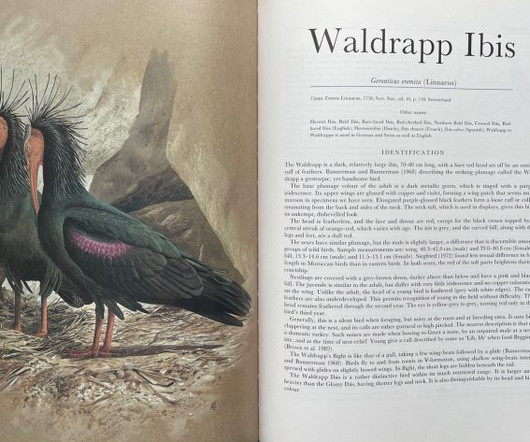The Cattle Egret Expansion
10,000 Birds
JULY 22, 2014
Other species have certainly expanded their ranges, but never in such a rapid and global scale. I’d like to introduce you to a diminutive heron, the Cattle Egret Bubuclus ibis. The Cattle Egret is native to Africa, where it is a familiar sight among herds of large mammals. a Cattle Egret in Brooklyn.












Let's personalize your content